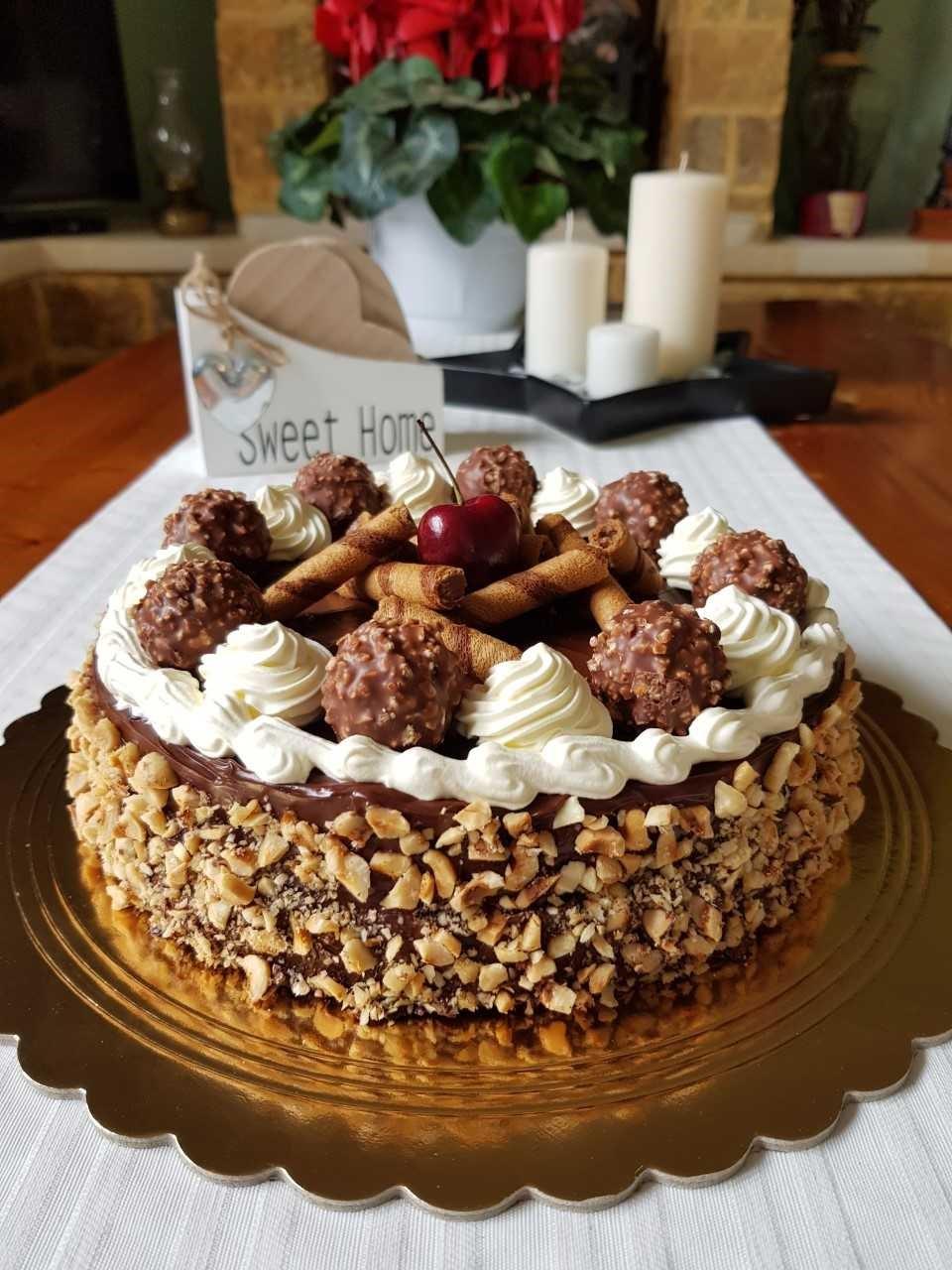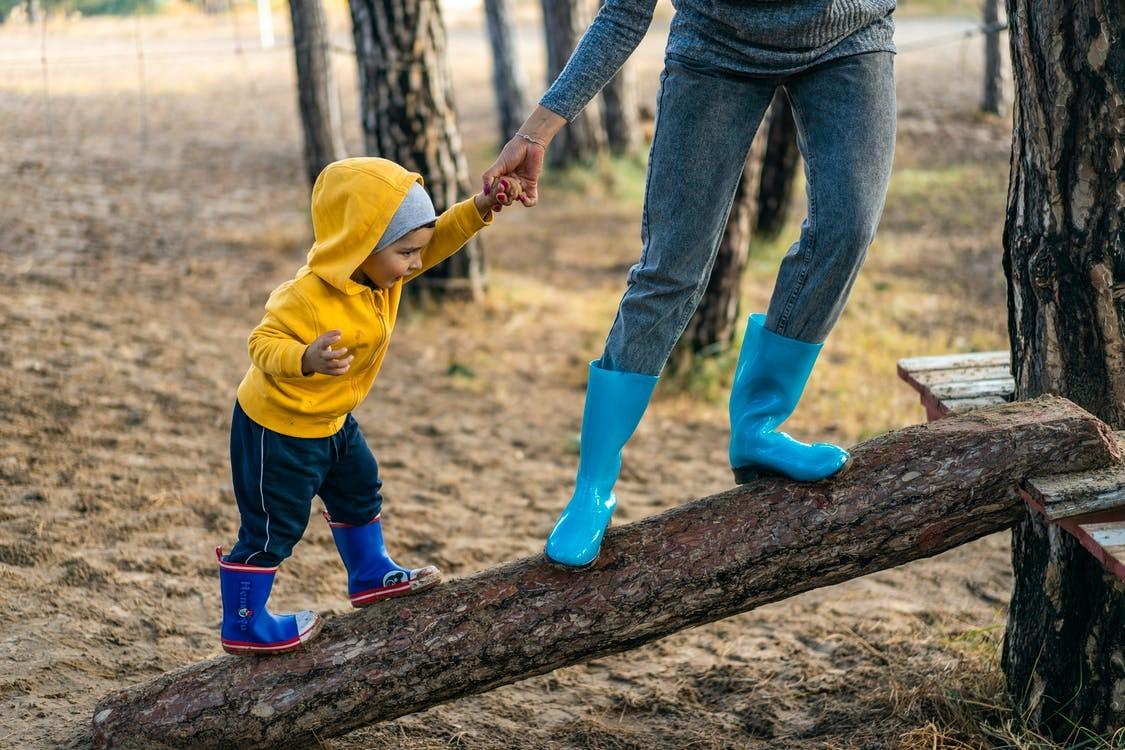
14 minute read
Child-friendly towns and villages
S u z a n n e G a r c i a I m b e r n o n T a s k M a n a g e r ( O f f i c e o f t h e C o m m i s s i o n e r f o r C h i l d r e n ) Every child has the right to live and grow up in a place which guarantees children’s rights. A place where children are surrounded by a clean environment which is safe and secure, a place where they can access services as well as enjoy their rights to play and leisure. Children form part of the local community and they should be involved in any project and initiative being carried out.
In 2019, the Office of the Commissioner for Children commissioned a research study entitled Healthy Spaces, Co-creating Childfriendly Towns and Villages which was carried out by the Centre for Resilience and Socio-emotional Health with the support of the Environment and Resources Authority. The aim of this study was to investigate how towns and villages in Malta and Gozo may become more child-friendly and consequently drive key stakeholders to create appropriate spaces in collaboration with children and young people themselves.
The research project focused on children’s rights in relation to safety and security as well as recreational, play and social spaces for children and young people, nature spaces, cleanliness, and inclusive spaces.
A survey was carried out with school children in primary and secondary schools as well as with parents and key stakeholders.
P h o t o g r a p h y : O l e k s a n d r P i d v a l n y i


A number of focus groups from the same cohorts were also held. The study has identified the main issues that need to be addressed so as to ensure that our towns and villages are really child-friendly and ageappropriate.
Just over half of those children who participated in the study agreed that they have enough open areas to play or enough walking and cycling routes where they live. Only 48% of children reported feeling safe playing outdoors or walking on their own.

With regards to adolescents, 39.4% agreed that they had adequate places to play and 55% of participants agreed that the places where they play and socialise are clean and cared for. Most parents agreed on the need for better play and recreational areas for their children. Most stakeholders (58.6%) did not feel satisfied with the spaces available for children to walk and cycle or with a clean and healthy environment in their locality.
This research study was launched at a National Conference which was held at the beginning of May. The findings of the study were presented so as to create awareness amongst key stakeholders on how we can work together to make towns and villages in Malta more childand family-friendly. The report also puts forward a number of recommendations such as the creation of an index to support and guide local councils for localities to be more child-friendly particularly by involving children themselves.
What are the EU Social Security Coordination rules... and how do these apply to me?
K a r e n F a r r u g i a M a n a g e r I I ( R e s e a r c h ) I n t e r n a t i o n a l A f f a i r s
In this series of Articles, we will provide more specific information on the application of the EU coordination rules. The previous article provided detailed information on the U1 document, and its use. This Article will provide more information on the P1 document which is a very important element of the coordination rules. The P1 form and its use.
As explained in previous Articles on the topic of Pensions, if during your working life, you worked in more than one EU Member State, you are eligible to claim a pension (Old-Age, Invalidity or Survivor’s) from each of these countries. You should apply for your pension in the country where you live, unless you never worked there. A "contact institution", normally an institution of the country where you live, will take charge of the management of your pension claim. In the event that you did not work in the country where you live, you should contact the institution of the country where you last worked in order to process your pension claim. The contact institution will assist you in compiling the pension claim, process it and eventually facilitates the exchange of information between the countries involved in your pension claim. Eventually each country or countries where a pension claim has been submitted will communicate to the contact institution the decision about your pension claim whether this has been granted and the relative pension amounts, or otherwise inform the contact institution of an eventual refusal of the claim including the relative justifications.

Where to obtain the P1 form? Once the contact institution has been notified of all the decisions from the different countries involved in your pension calculation, it will send you a summary note of these decisions (a P1 document). The summary note, the portable document ‘P1’, will give you an overview of the decisions made by each country about your pension claim. It will inform you on the way the institutions have dealt with, the different periods of insurance and allow you to see, for instance, whether there are gaps, or overlapping of certain insurance periods. In alternative, you can also request the portable document P1 on your own initiative by contacting your “contact institution”. A full list of institutions can be found at http:// ec.europa.eu/social-security-directory.

P h o t o : K a r o l i n a G r a b o w s k a
Lorraine Cauchi Riċetti kulħadd jgħid tiegħu
T o n i o B o n e l l o
First of all thanks for accepting to be interviewed. For those who do not know you, how do you describe yourself, your childhood, education, work, places you’ve lived in and family (your parents, brothers, sisters)? For those who do not know me personally I would describe myself as a very friendly, and loving personality. A person that is patient, and likes precision. I am a family person and not a career woman. I was fortunate enough to be supported by my husband, so I never had to work. This gave me the time to spend raising our children and focusing on the family. Although I love cooking I really enjoy the occasional dining out where I can close the kitchen, pamper myself and enjoy a meal out with my loved ones. Growing up we lived in Mosta. As a child life was much simpler and not so sophisticated as it is today. Mosta was still full of fields and not as inhabited as it is today. In those days we didn’t have computers, or electronics, so our leisure was playing traditional outdoor games with friends and family. I see that you speak English very fluently but not so much Maltese. What is your country of origin? How did you end up here in Malta? During the time that Malta was colonised by the British, my mother met my father as he was in the British military. They got married and decided to move to England and shortly after I was born there. At the age of 2 my mother decided to come back to Malta, and raise my siblings and myself here. I have three brothers and two sisters. Being that my father is English we always spoke English at home, so Maltese was not a primary language for our household, and I did not learn it at school either since I was attending an international english speaking school (Verdala). Today I can speak Maltese fluently, but I am not so confident in reading and writing. I managed to learn a lot through my children as they were growing up whilst helping them with their schoolwork.

What about your actual family in married life, husband, children and may be, grand children? We have been happily married for 34 years, and have been blessed to have 3 children during our marriage. My husband’s family owned a shop in Mosta, and that is where we

met since I used to visit the shop to buy stationary items. He always used to joke with me, and tell me “One day I am going to marry you” and that’s exactly what happened.
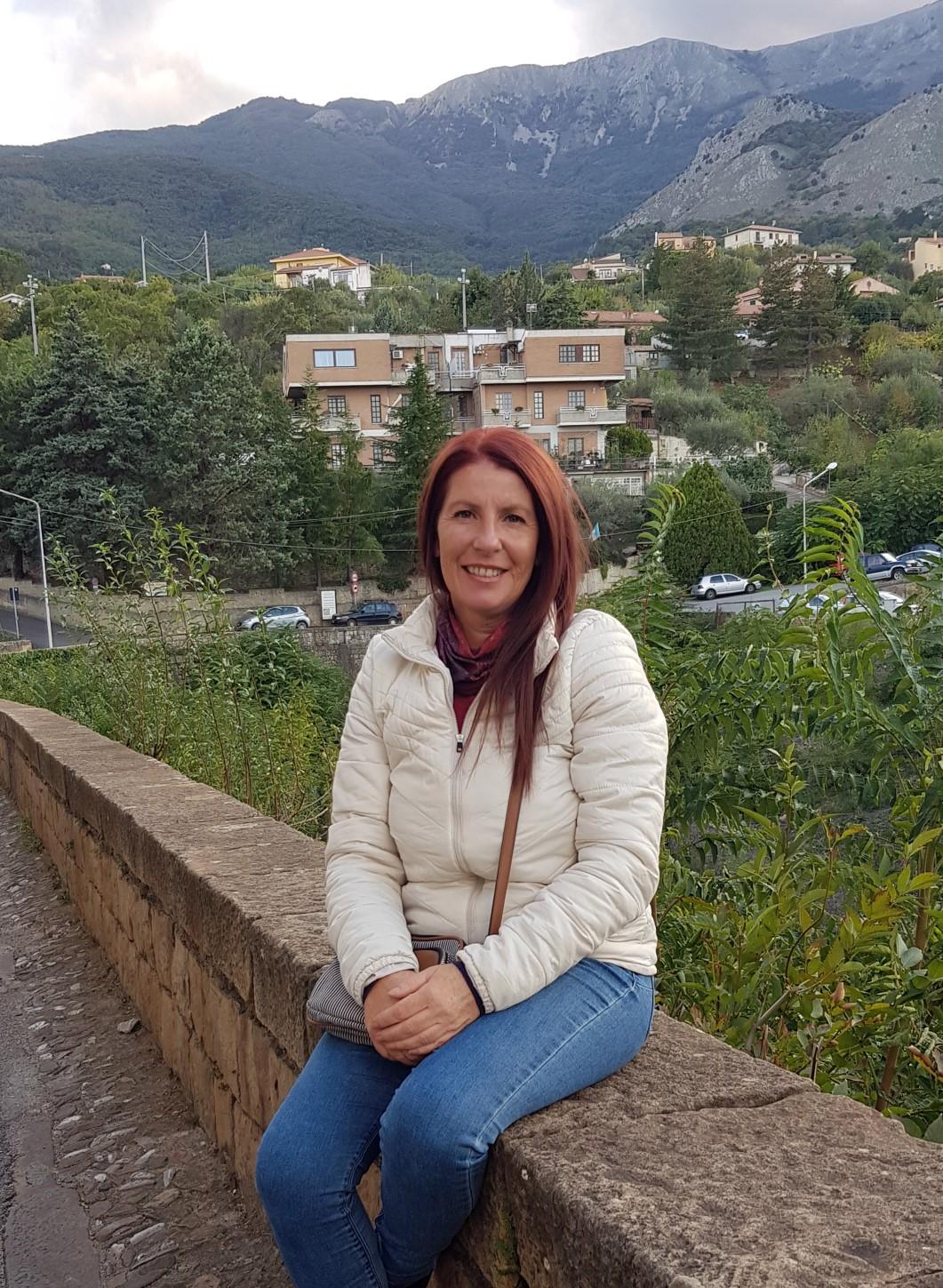
We starting dating when I was 15, and never looked back. My family is the most important thing in my life and that brings me complete happiness. I am so proud of them of who they have become, and what they have accomplished in life so far. I will always put their needs before everything, and everyone including myself. One of your main attributes on this page is not only presenting delicious food, but most of all in creating to detail such dishes with so much love, work and artistry. How do you manage to produce so much beautiful works? And who is the photographer behind such works of arts? From an early age I knew cooking is going to be a hobby that I really enjoy – it is my passion. The time I take into decorating especially pies and desserts are my favourite, because thats where I can put art into food, and seeing the end result really gives me great satisfaction. At the age of 15 I started to cook at home whilst learning the basics from my mother. In the beginning my mother used to give me the responsibility of cooking Sunday lunch which helped me a lot to learn. Later on when I got married I started referring to cook books to broaden my knowledge on different recipes. I have never attended any professional catering school or worked in a catering business, so everything I have learnt was self-taught. As the years went by and learning from my mistakes I became better and better to what I have become today. I continously challenge myself with cooking new recipes, as I love to eat and try different kinds of foods & desserts. Everytime I try a new recipe it is always trial and error, until I find the right combination to make it a perfect dish to my liking. At this moment in time my children are all grown up, so it has given me more time to focus more on what I love to do. I would say, the two main attributes that bring such great results are patience & being a perfectionist at your work. I take the photos myself, and setup the background accordingly to compliment the food and desserts I am presenting. The focus for myself is always on the food as that is the most important part of the picture. Something that make followers curious is that you present a lot of different main dishes along with several other deserts frequently? What happens soon after with all the food shown? Is everything eaten by the family or maybe you work freelance supplying clients with food on order as well? Cooking for me is a hobby that I am very passionate about, so I have never attempted to make it as a profession, so it will always remain close to my heart. All the food and desserts I prepare have always been made for my family to enjoy. When I have any leftovers my children would take them to the office with them to share with their colleagues.



In such a busy life we all lead, how do you describe a typical day of your life? I always start my days very early, so that I can use the morning time to attend to my house chores, shopping, and preparation of what I am going to cook for the day. This would give me time to relax in the early afternoon before I start cooking dinner for my family, so that the food is ready when they return home from work. On Saturdays I always like to leave it free to make a dessert as this would take up much more time to prepare than regular dishes. When travelling abroad, do you like to taste traditional dishes of the countries visited?
I like to travel mostly to Italy, and love Italian food. Some of my recipes are also inspired from Italian traditional recipes. My favourites are their antipastos & pasta dishes, and with regards to dessert it would be the “Ricotta Cassatelle” which is known as a sweet ravioli – They are little cressents of dough, deepfried and filled with sweet ricotta. What is your favourite Maltese dish and Maltese desert? My favourite Maltese dishes are: Qarabali l-forn and Kusksu”. I like a lot of Maltese desserts, but probably the number one for me is Imqaret bil-ġelat tan-nanna. What do you have to say to all your followers on Facebook? No one is born a great cook, one learns by doing and practicing makes perfection. From my heart I would like to thank all the people & followers for all the thoughtful messages I receive in appreciation for my posts and recipes. This means a lot to me that what I share is an inspiration to them. With my recipes I try my best to give as much detail as possible for the person who is attempting to cook the dish, so that it would be perfect and satisfying for them as much as it is for me.
1. Main Course
My Lampuki Pie
As much as I love cooking I mostly love to make pies because that's where art can be expressed in food.
Being that it is a fish pie, I had the idea of making it into the shape of a fish.
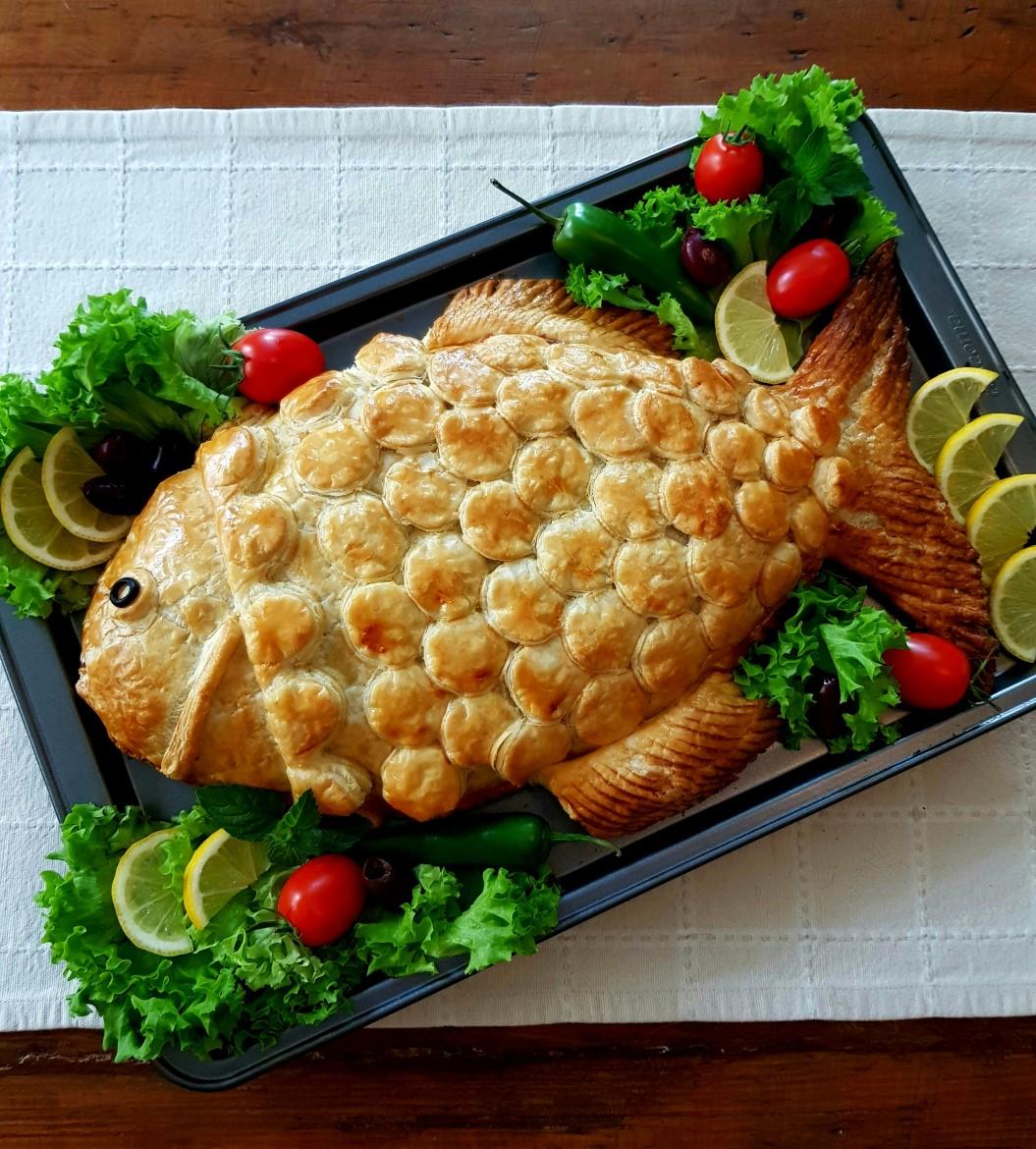
To compliment the pie I garnished the dish with green, red, and yellow fruit and vegetables. Then I placed the dish on a simple white background so that the dish stands out more.
Seeing this pie come to life gave me great satisfaction. 2. Main Course

Barbeque Pork Tenderloins
In this setup being that they are in a black dish, I used a light coloured serviette for colour contrast. I placed a colourful pot in the background to add a bit more colour as the dish itself seemed a bit dark.
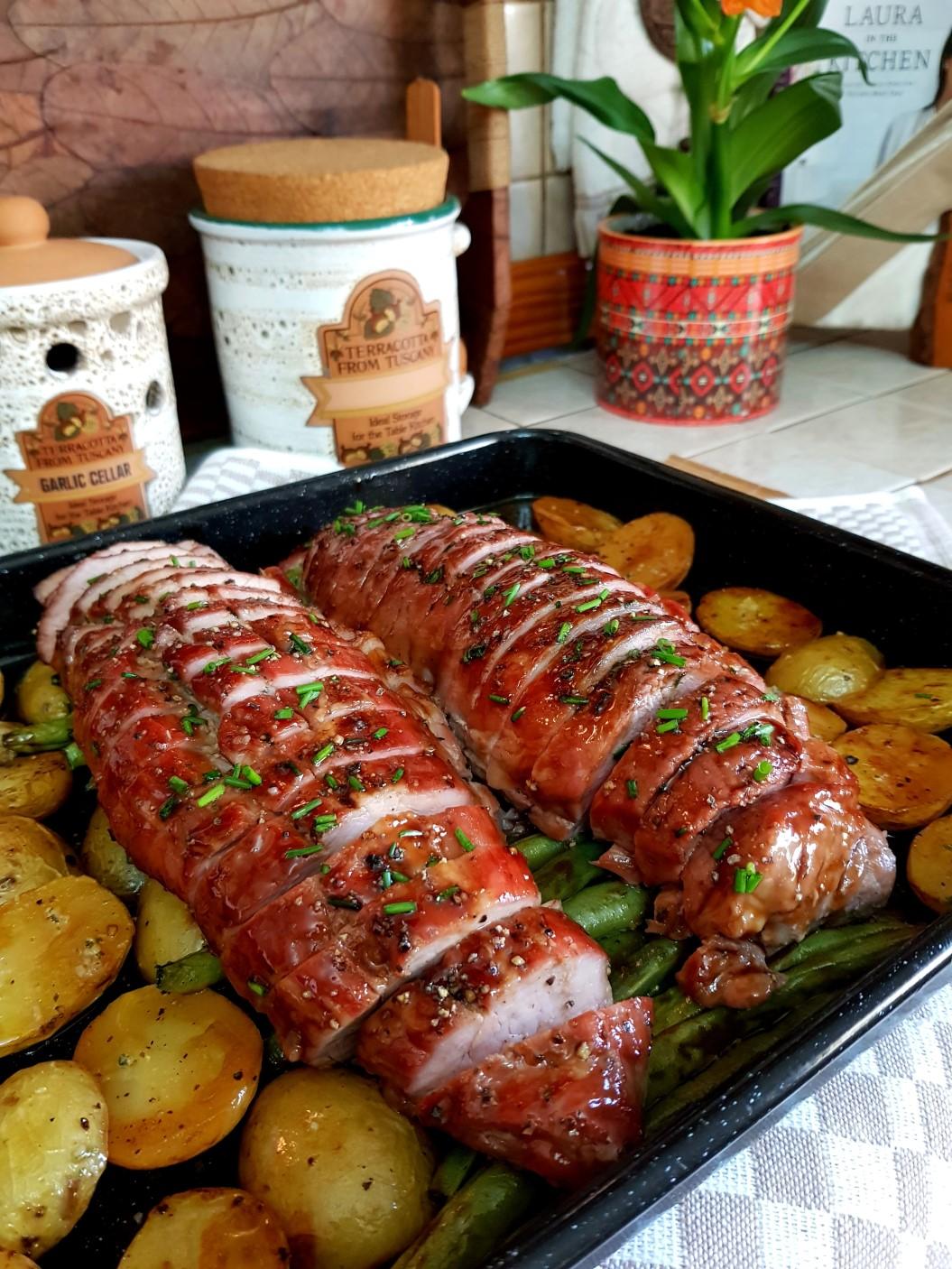
3. Dessert Lemon Cream Pie
Being that a lemon pie is quite pale in colour, I wanted to make it pop by decorating it with raspberries, lemon, and mint as the colours compliment each other.
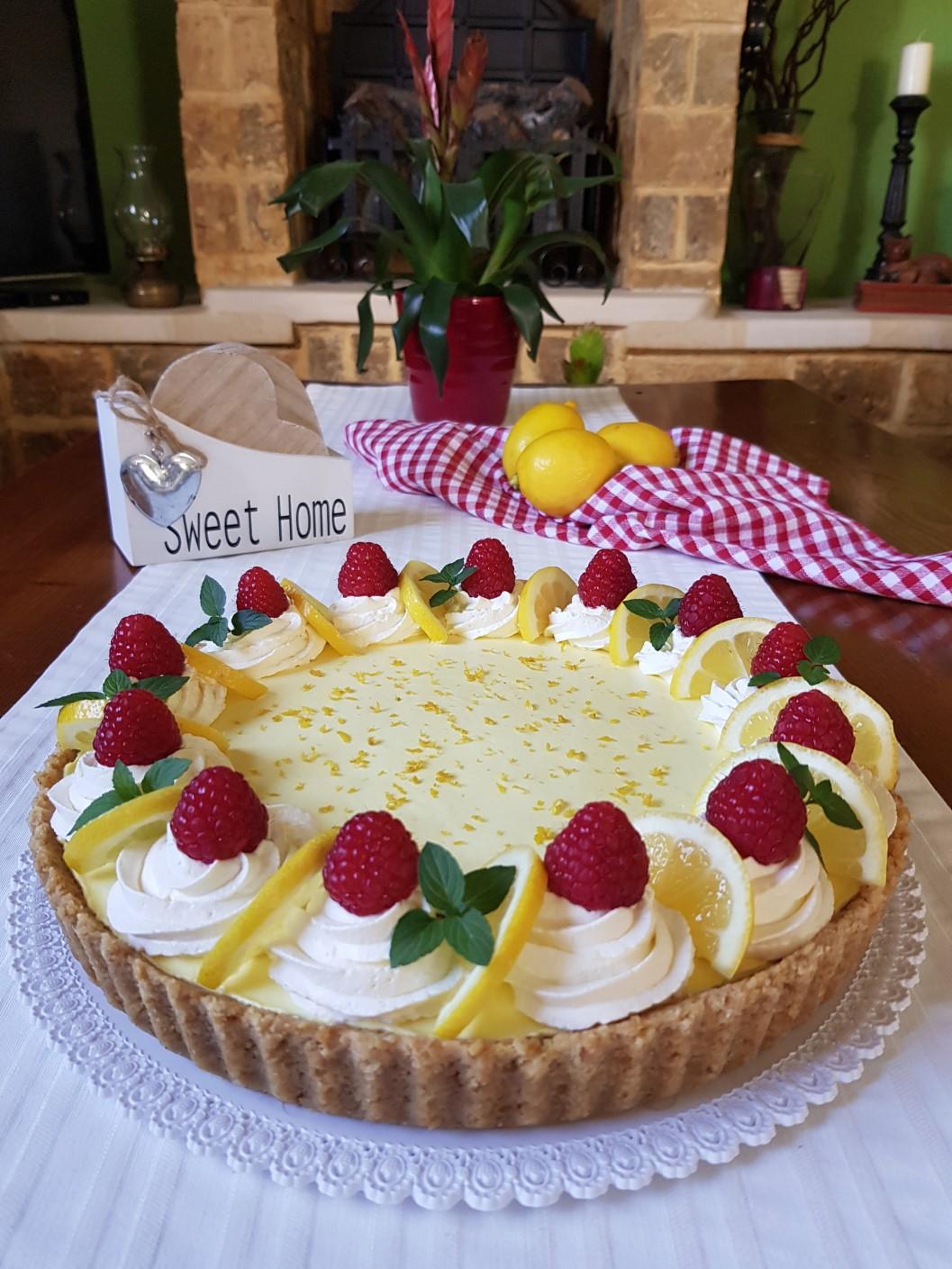
I used the same colours to decorate the background of the picture by adding a red pot, green plant, and red checked serviette.
I placed the lemons on the serviette since they are associated with the dessert. 4. Dessert Ferrero Rocher Cake
When decorating cakes I like to use panna as you can make different shapes and designs. I also like to add something which is associated with the recipe, in this case it was the famous Ferrero Rocher balls. The base was also a gold tray to symbolise the Ferrero wrapper.

Since the middle was empty in comparison to the edges, I decided to fill it in with wafer rolls and a cherry to compliment the cake.
For the background I kept things simple with white candles and a white pot with a bright red plant so as to not distract from the cake.
